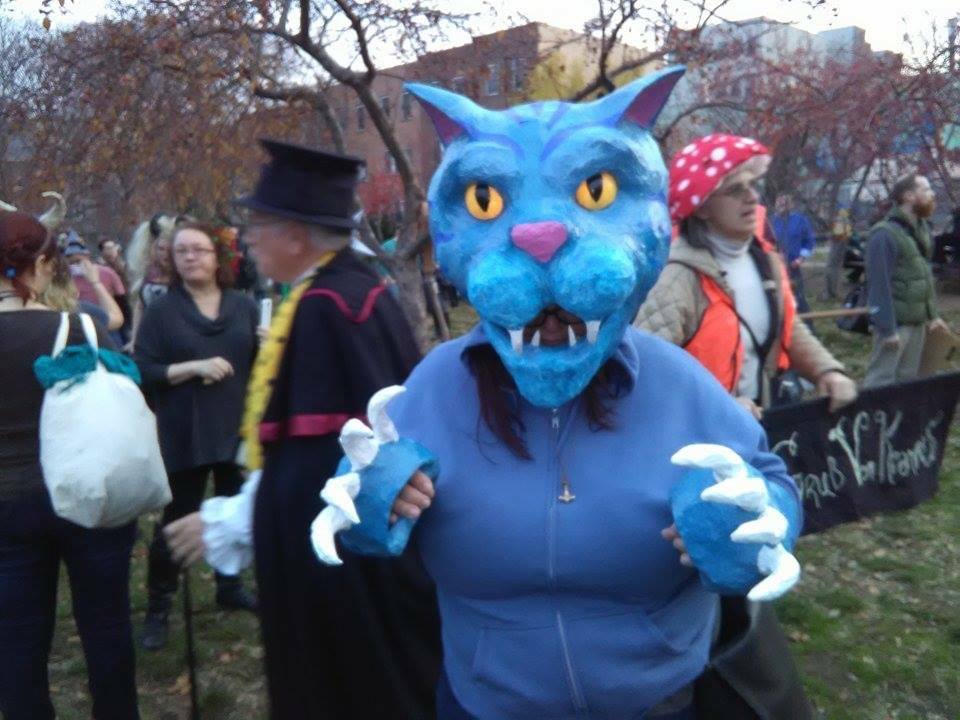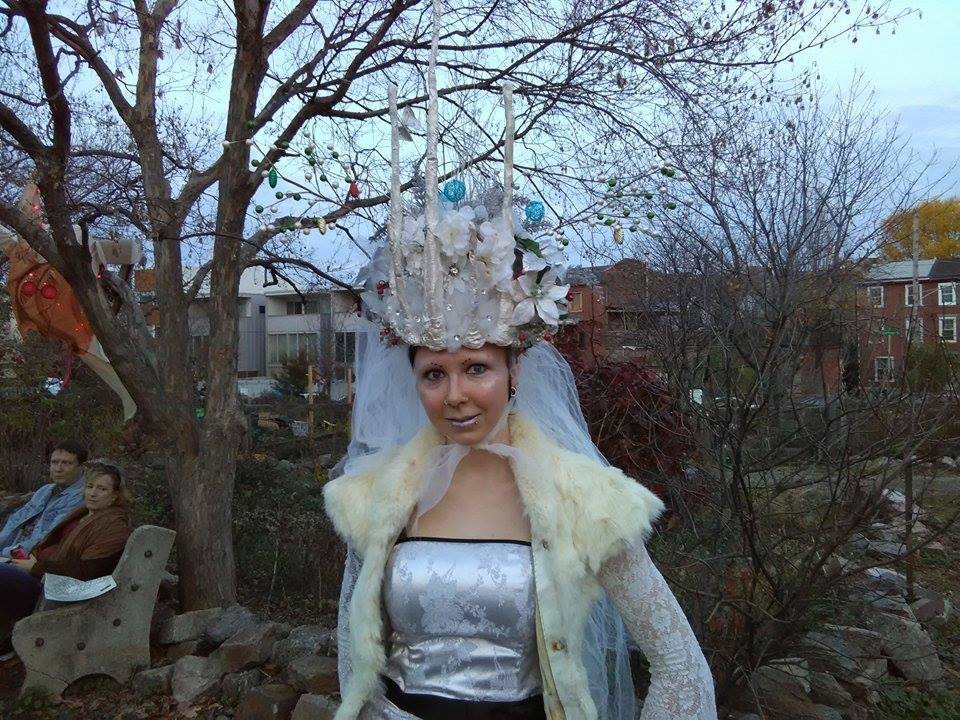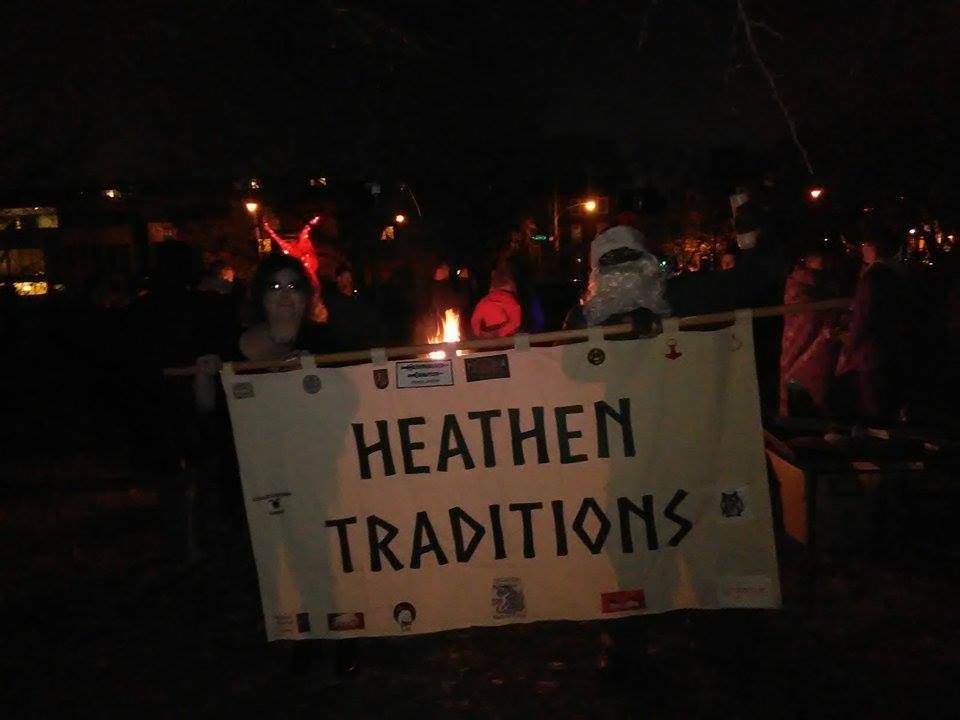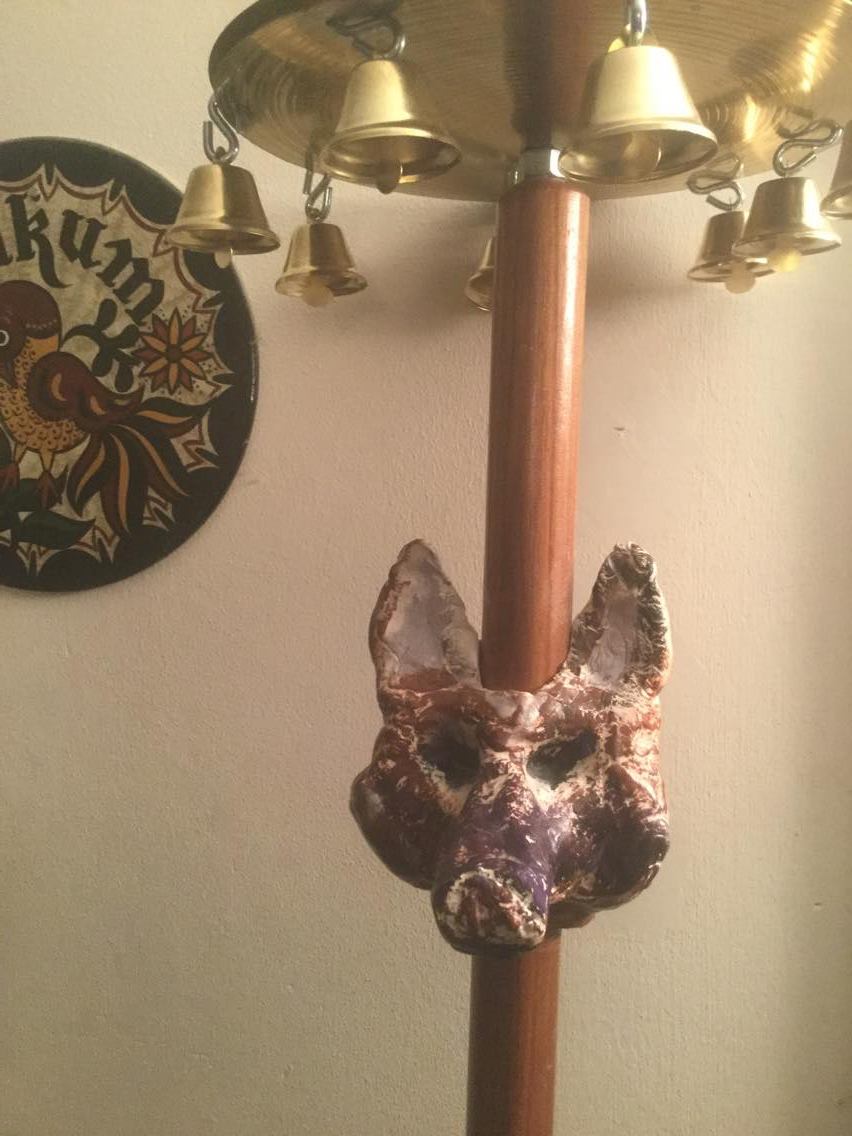PHILADELPHIA — Pagan and Polytheist traditions have a tendency to be influenced by local culture, and that’s particularly evident in Urglaawe, a form of Heathenry practiced in Pennsylvania. The term “Pennsylvania Dutch” comes originally from Deutsch or Deitsch, and provides an Americanized lens through which to explore Heathenry.
Robert Schreiwer, a leader of Urglaawe, explained how the dark times leading up to and through the winter solstice are honored in this unique tradition. It’s a practice that includes concepts common to Heathenry such as the Wild Hunt, as well as the visual spectacle of a flaming, spinning Yuletide sun wheel and a visit from Krampus.

Flaming sun wheel [Courtesy Photo]
“We see him as killing plants (and other forms of life) so as to release their spirits rather than allowing them to be killed by King Frost and having their souls removed from the Lewesraad (life cycle: life, death, rebirth).”
Holle leads the Wild Hunt, but other deities are involved as well, with their own goals. Holle and her entourage hunt through all the realms, seeking departed souls to put back into the Lewesraad, thereby allowing them to evolve.
“Here on the physical realm,” Schreiwer further explained, Wudan (our equivalent of Odin) is engaged in his own search for wisdom among the people, and Berchta (whose feast day falls on Dec. 31) is collecting the souls of those who have passed on in this realm since Allelieweziel.”
Schreiwer then went into the significance of that period in more depth. He said, “The time between Allelieweziel and Yuul is a time to face one’s fears, to deal with the shadow side of each of us, to learn from mistakes, to recognize the darker aspects of ourselves and to learn how to manage them.”
That is how Krampus fits into to their folk perspective. “Whether that is the true root of Krampus I cannot say, but the dark, raw, animal side of each of us is something that we need to confront, and existence can certainly be scary. Krampus has lessons to teach us.”
![[Photo Courtesy Krampuslauf Philadelphia: Parade of Spirits 2006]](https://wildhunt.org/wp-content/uploads/2016/12/11864803_1636580353285386_9162320210173817091_o-500x337.jpg)
[Photo Courtesy Krampuslauf Philadelphia: Parade of Spirits/Facebook]
Schreiwer often leads the mid-December procession as Gedreier Eckhart, who is Holle’s servant and harbinger. He bears a Boomba, which he described as a “Pennsylvania Dutch percussion instrument that bounces on a stick.”
With its name change, the annual parade has also been moved later into the month, in order to be closer to the solstice, and Schreiwer thinks that a downside of this move may be that fewer Heathen kindred will be able to participate. Last year the event drew about 500, an impressive sight given that it’s not a spectator sport.
People who live along the route certainly watch, but that number is about how many people actually dress up and join in. Their costumes represent many of the Wild Hunt beings, including Krampus, and signal a change of tone in the hunt itself to more of a mummer’s parade as the promise of new life is born in the coming year.
“People are welcomed to make themselves up and to join the parade,” Schreiwer said. “Costuming can be as elaborate as Krampus or Belsnickel or as simple as ghoulish makeup to represent a spirit in the entourage.”
The full Urglaawe festival of Yuulzeit (“twelve nights”) begins with Muddernacht on Dec. 20, when the flaming sun wheel comes into play. “Our flaming sun wheel has its origins in a desire to see the strength of the sun to increase and in adding our energies to the enlightenment of the self, of the community, and of existence,” Schreiwer said.
Yuulzeit concludes with a traditional Pennsylvania Dutch meal of pork and sauerkraut dedicated to Frey and Luul, and another meal called the Berchtaslaaf, or Progression of Berchta. “Urglaawer typically make the fare to consist of herring and oatmeal or dumpling and herring meal,” explained Schreiwer.
“Some folks, particularly our Frankish brethren in Canada, also make Zemmede (also known as Zemmete, Semmede, and a few other variations) as part of Berchta’s meal.”
Schreiwer added, “The most intact tale we have related to Berchta is the closing of the Wonnenacht myth, which describes her as Holle’s ‘sister,’ describes Berchta’s role in the Wild Hunt as being within this realm, and her taking souls from Holle’s mill to her own home in the Unnergegend.”
With Krampus nipping at one’s heels, a flaming sun wheel to give hope for the future, and the Wild Hunt all around, celebrating the solstice with the Urglaawer is something that is likely difficult to forget. Here are a few additional images from 2015 Parade of Spirits.
The Wild Hunt is not responsible for links to external content.
To join a conversation on this post:
Visit our The Wild Hunt subreddit! Point your favorite browser to https://www.reddit.com/r/The_Wild_Hunt_News/, then click “JOIN”. Make sure to click the bell, too, to be notified of new articles posted to our subreddit.





Thanks, Terence. I attended a very interesting session on Urglaawe at last year’s Sacred Space conference. I’m ashamed to say I’d never heard of it before.
I and many other Philadelphia area Pagans are proud of Robert. He has also served as a lead organizer for our Pagan Pride event.
That’s good news, Franklin.
I grew up in the Philly/South Jersey area and I can assure you that in the 1940s and ’50s the entire population, at least the visible population, was Abrahamic through and through, largely Protestant. Urglaawe had not yet been revived — unless its practitioners were sharing the broom closet with us Witches. I’m glad to know of it.
I grew up in Upper Darby (Drexel Hill and Garrettford), and witnessed with child’s eyes the partial Catholic meltdown over divorce in the 60s and 70s. Our Unitarian congregation was half-facetiously described as being 70% ex-Catholics who were remarried and had nowhere else to go.
I remember them as good people. Racists, most of them, isolated within their ethnicities (nearly all either Italian or Irish), and at your door with anything in their power to do when you were in distress or crisis.